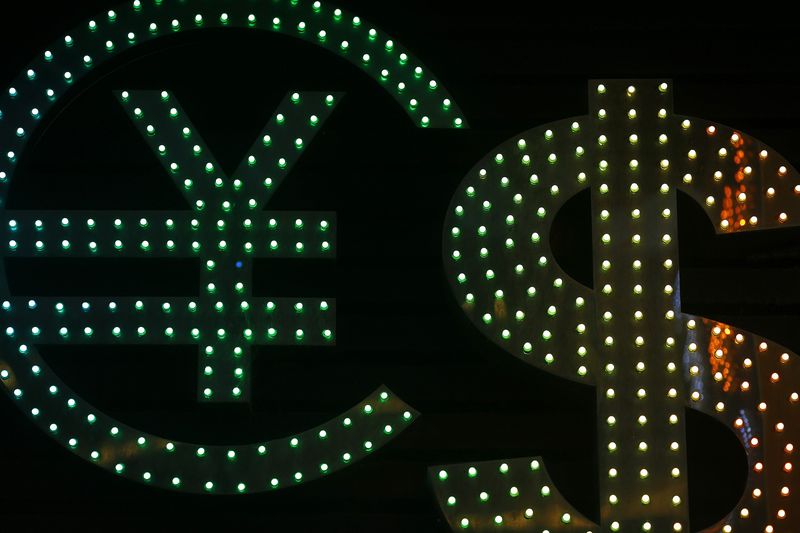TPI Composites files for Chapter 11 bankruptcy, plans delisting from Nasdaq
* Appetite for safe-haven currencies recedes
* Dollar maintains gains as euro, Norwegian crown wilt
* China's central bank fixes yuan lower than expected
* Graphic: World FX rates in 2019 http://tmsnrt.rs/2egbfVh
(Adds context, quotes, chart, updates prices)
By Olga Cotaga
LONDON, Aug 16 (Reuters) - The dollar rallied on Friday,
hitting a two-week high against the euro and reaching its
strongest in more than 17 years against the Norwegian crown as
expectations for lower interest rates weighed on the European
currencies.
The euro fell to $1.1073 EUR=EBS , within a whisker of the
two-year low it reached at the beginning of August. The biggest
move however was in Norway's crown, which dropped to more than a
17-year low of 9.0390 against the greenback in early Friday
trading NOK=D3 .
Better-than-expected retail sales data in the United States
on Thursday also encouraged buying of the dollar.
The crown extended its selloff after the Norges bank said on
Thursday its plan for an interest rate rise this year was now
more uncertain.
Norway's currency has been falling fast since June as the
price of oil - its principal export - has tumbled and as fears
of weaker global growth and tougher trade relations weighed down
on the open Norwegian economy. Trade tensions between the United
States and China intensified last week after President Donald
Trump warned he will be raising tariffs on additional Chinese
imports this year.
The crown later rebounded and was last up 0.3% at 8.991.
Against the euro the crown rose 0.6% to 9.9655 EURNOK=D3 .
Earlier this month the crown dropped to a near 11-year low
versus the euro.
"There's no good reason to be super bullish on the Norwegian
crown," said Lauri Halikka, a fixed income and foreign exchange
strategist at Nordic bank SEB.
The euro fell on Friday due to growing expectations of an
interest rate cut by the European Central Bank after Governing
Council member Olli Rehn suggested on Thursday that the central
bank could restart its quantitaive easing programme and was open
to extending it into equity purchases. "For the markets this came as a surprise," said Ulrich
Leuchtmann, an analyst at Commerzbank (DE:CBKG). However, the euro is
unlikely to sink much further on this reason, Leuchtmann said.
"ECB-induced euro weakness will be relatively limited
(because) if Europe's common currency would weaken too much, the
U.S. government's pressure on the Fed (to weaken the dollar)
could intensify."
Measured against a basket of six major currencies .DXY ,
the dollar was higher by 0.1% at 98.266. It has recovered by
1.3% from its three-week low on Aug. 9.
Data showing U.S. consumers kept spending in July came as a
relief after the U.S. Treasury yield curve inverted this week,
which historically has preceded U.S. recessions The inversion stoked worries about the impact of the
Sino-U.S. trade war. The curve steepened a little on Friday
China on Thursday said it would retaliate for the latest
U.S. tariffs on $300 billion of Chinese goods, but Trump said
any pact would have to be on America's terms, suggesting a
resolution to the trade war remains elusive. China's offshore yuan, whose plunge past 7 to the dollar
last week sent shivers through financial markets, was weaker on
Friday at 7.0530 CNH=EBS . The People's Bank of China fixed the
onshore yuan currency at 7.0312 on Friday, compared with market
expectations at 7.0307, according to analysts at Commerzbank.
Sterling GBP=D3 was up 0.7% at $1.2160, after reaching an
eight-day high of $1.2169 earlier. Against the euro, the pound
reached two-week high of 91.94 pence EURGBP=D3 .
Strong correlation between oil price and Norwegian crown since
June https://tmsnrt.rs/2NdQYj0
^^^^^^^^^^^^^^^^^^^^^^^^^^^^^^^^^^^^^^^^^^^^^^^^^^^^^^^^^^^>
